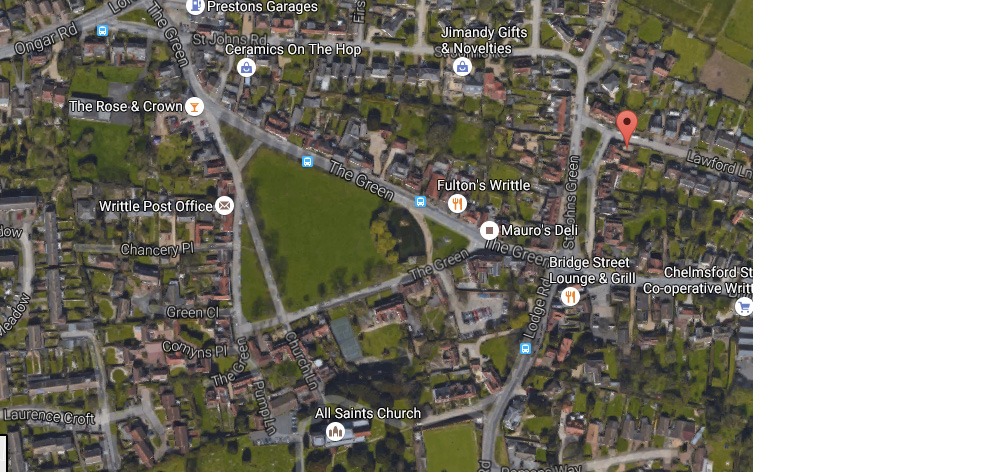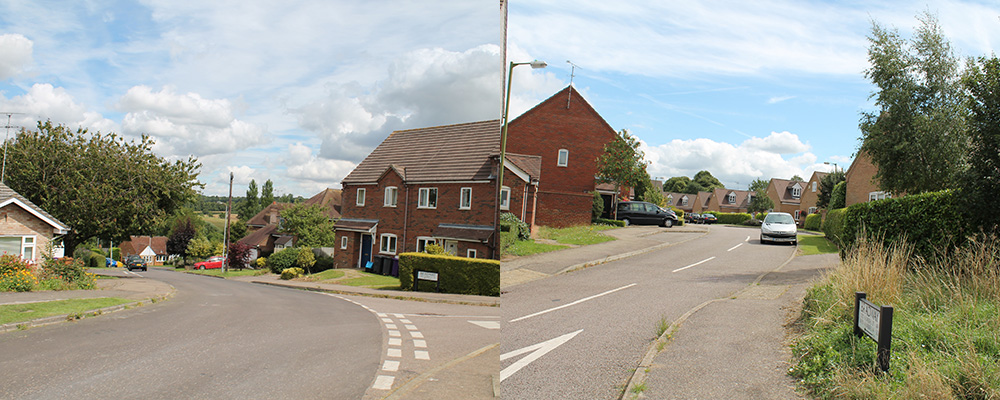The Squared Village
Sharp suggested several categories of village for simplicity, to aid understanding. Whilst his next category is the squared village, these groups capture only the core common understanding – in this case, of a village arranged roughly around a square – and in doing so leave the individual characteristics of each village to be discovered. These might be, for example, a mill, a small striking bridge over a river, or a charming row of cottages nestled gently back from the road. As Sharp himself says, “every village is an individual place”.
As if to exemplify this, he immediately states: “The ‘square’ village may be of almost any shape.”
(See the original shape of Writtle, Essex, below).
If it has grown naturally, through time, it will be irregular and informal. What squared villages tend to share, however, is a plan form settled around a large or long rectangle-like open space. This will have been designed for a variety of reasons. Northern examples of these villages, for example – Heighington and Gainford in County Durham and Milburn in Cumbria – are simpler in shape, with buildings arranged around a clear square which offered safety and defense – into which sheep and cattle could be herded, and protected, during border raids.
Southern examples tend to have developed as a community around a great house or castle. All offered the utility of a market function, and most still do, although where there were once sheep, cheeses and fabrics there are now predominantly cars.
With this in mind, squared villages are often as unplanned and irregular as their roadside kin, and offer the same charming informality redolent of English villages. Whilst their shape lends them “more immediate appeal to the imagination”, and conveys more clearly a visible sense of community, they are individually defined by chief buildings emphasising certain points. In 1946, these were “the village pump, a covered well, a little market hall, the village lock-up, or occasionally a bigger building”. Today, they might perhaps be a café, church or pub, which punctuate the view into the village.
Whereas in the roadside village a sense of place is defined by a kink or turn in the road, flowing gently past cottage or church, the self-contained shape of the squared village give the feel of having reached a “local climax”, as the square contains the buildings within it.
Views out of the village are similar in both, framed by a slither between two buildings, a road curving away, roadside trees offering only glimpses of the close countryside beyond. “No road, no vista, running right through.” This notion may have been taken too far in the midst of postwar development, which has seen the growth of confusing suburban mazes, whose twists are perhaps too tight and turns contrived rather than functional.
It is interesting to reflect, briefly, on what drove the development of the northern and southern squared villages – defense in the former and the local economy in another. Today, a rising population, ageing demographic and a London-centric economy means that – in the South East at least – development is driven by a rampant demand for homes. The task for planners and architects now, then, is to capture the irregularity and informality given by functional piecemeal growth through time, when demand is increasing and immediate.





